Mixing Things up for a Sweater
words and photos by: Johanna Carter
I always admire those who are able to spin mountains of yarn for a big project, ready to knit a wonderful sweater or cardigan. It is a satisfying feeling when you finish all that work, especially if you started with washing and combing the wool or even raising your own sheep.
Mixing spinning and knitting
The typical way to work through a larger project is to spin all the singles first and ply them in a particular order so you get the yarn even throughout the whole project. I don’t have so many bobbins, but my bigger problem is that I am quite impatient and want to get on with knitting once I have an idea. And normally, my brain is full of ideas for fibre work and the limit is the time, as I am a musician and teacher. I can’t sit at the spinning wheel for a long time if I’m not on holiday, so during the school year I mostly knit, and during the holidays I can dye, spin, use my drum carder, and do lots of fibre work. The only time I was able to produce bigger quantities of yarn before I knitted them up was during the Tour de Fleece in the two years during the pandemic, when we did not go on holiday at the beginning of July.
I like to finish knitting one big project like a sweater or cardigan before I start the next one, or at least until I can’t carry it in my bag easily anymore, so I have an excuse to begin the next one. Sometimes it is good to have a second project on the go – I call it mindless knitting, where I don’t have to look very much – which I can keep my hands busy during Zoom or other meetings, which helps me listen.
Mixing colours and fibres
Usually I dye my yarn with plants which I collect in the woods or get from garden flowers. I also use cochineal and indigo, which I buy, to get lots of different colours. I really love the greens and blues I get from dyeing with indigo. I have lots of dyed wool, and all those colours give me inspiration for further projects.
Blending the wool on the drum carder I can get even more shades. I like to blend with fibres like silk, alpaca, or plant fibres, and I love sari silk, to get those little bits of colour in my yarn.
When I have an idea for the next sweater, I start carding, and then I can begin to spin. Once I have spun enough yarn – say, for one day – I cast on and start knitting, usually top down, so I don’t have to decide too much in advance about length and width.
When I spin on my wheel, I have to sit at home, but while spinning I can read a book or talk to others during online meetings. I also like to spin on my spindles, and that works on a walk, or a museum visit. I take them on holiday as they don’t need much space, and when I spin for a lace shawl, I don’t even need much wool either. At home there are spindles all over the place; I can spin when I am waiting for the kettle to boil, when the computer is slow, when I am cooking. Like that I can make good use of a short time and the yarn still grows.
I can take my knitting almost everywhere, which is why I don’t want to wait to get started until I have spun all the yarn for a whole sweater. I knit at home, on the bus or train. The only thing I have to make sure of is to be one step ahead with the yarn.
I love to knit Fair Isle sweaters. My favourite method is to use only one bobbin, which I don’t even fill, because I need smaller quantities of lots of colours. Then I wind a ply ball and ply it on itself. For that I put my thumb through the ball, so I can tension the two singles with my fingers and they don’t get tangled, as long as my thumb (or a cardboard roll or a pencil) stays in the middle. I don’t have any leftovers from plying, and it is quick when I suddenly need more yarn.
I have never had problems with the yarn not being consistent enough throughout a project. I just know what yarn I want and my fingers seem to remember what to do. I am sure it is good advice to have a little card tied to the spinning wheel with a bit of the singles you are aiming for, so you can check and make sure you are spinning a consistent yarn.
Mixing breeds
There are so many different breeds, but some of my favourites are Shetland, BFL, and Jämtland – a Swedish breed. After dyeing them, I often forget what I have used, so when I do a new project it often turns out that I have used different breeds and fibres just to get the right colour. For the Fair Isle knitting I want to juggle lots of colours, which is more important to me than making a sweater out of only one breed.
Recently I made a pullover for my husband using about 12 different breeds and colours, even mixing short and long draw. For me it was a breed experiment and a way to use up lots of smaller quantities of wool I had in my stash. For that sweater I used combed top without blending.

Mixing in knitting during the spinning process is a wonderful way for a spinner to avoid being overwhelmed during a sweater project.
My feeling is that some people don’t dare to start spinning for a bigger project because they get overwhelmed by the quantity they have to spin and then all the knitting there is to do, especially when you want to spin the yarn entirely on spindles. Mixing the spinning and knitting for the same project is more interesting; you get more variety and more freedom to choose what you want to do next as long as you don’t run out of yarn. It breaks the project down into smaller, less daunting parts. The only thing you might want to plan is to have enough fibre at the start, but even that is not necessary, there is always a sheep growing more wool.









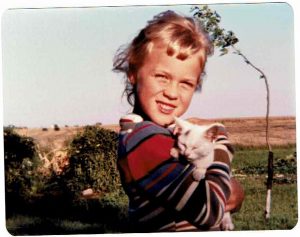 It is always interesting to hear how people got into the fiber arts for a career. My story is a long-ish and convoluted one. I grew up on a small homestead, and my mom raised orphan lambs, both to help with the endless lawn mowing and for some pin money. I got to help feed the bottle lambs. One summer, Mom went off to Siever’s School of Fiber Arts in Wisconsin and returned with a spindle and all kinds of plans for spinning and weaving. She established a flock of brown sheep and bought a spinning wheel and handcards. Her plans fizzled after the first lambing season – and the first giant felt donut she made in the washing machine – and when the ram came after my brother and me – but we still had orphan lambs every year from spring to fall. One year, she got them just in time for my Spring Break! (Because they are newborns, orphan lambs need to be fed every 4 hours around the clock the first week.)
It is always interesting to hear how people got into the fiber arts for a career. My story is a long-ish and convoluted one. I grew up on a small homestead, and my mom raised orphan lambs, both to help with the endless lawn mowing and for some pin money. I got to help feed the bottle lambs. One summer, Mom went off to Siever’s School of Fiber Arts in Wisconsin and returned with a spindle and all kinds of plans for spinning and weaving. She established a flock of brown sheep and bought a spinning wheel and handcards. Her plans fizzled after the first lambing season – and the first giant felt donut she made in the washing machine – and when the ram came after my brother and me – but we still had orphan lambs every year from spring to fall. One year, she got them just in time for my Spring Break! (Because they are newborns, orphan lambs need to be fed every 4 hours around the clock the first week.) In the process of my research, I discovered the new indie dyer scene. I had enjoyed dyeing the scarves and ties and was ready to apply my knowledge to yarn – voila, Painted! I started selling on Ebay and Etsy and then launched ThePaintedTiger.com in 2008. I improved my childhood spinning skills and decided to dye fiber, too. In keeping with my business name, I specialize in handpainted colorways and enjoy making stripes and gradients on yarn and fiber. One of my favorite things to dye is for Tiger Club, my monthly yarn and/or fiber club, because I love to come up with new ways to put color on wool, and it gives me an excuse to try new fibers, as I try to offer a different one each month of the year.
In the process of my research, I discovered the new indie dyer scene. I had enjoyed dyeing the scarves and ties and was ready to apply my knowledge to yarn – voila, Painted! I started selling on Ebay and Etsy and then launched ThePaintedTiger.com in 2008. I improved my childhood spinning skills and decided to dye fiber, too. In keeping with my business name, I specialize in handpainted colorways and enjoy making stripes and gradients on yarn and fiber. One of my favorite things to dye is for Tiger Club, my monthly yarn and/or fiber club, because I love to come up with new ways to put color on wool, and it gives me an excuse to try new fibers, as I try to offer a different one each month of the year. It is believed that Gotland sheep originated from sheep brought by the Vikings to the Swedish island of Gotland. The original Gutefår sheep were horned, with no belly wool and white markings around the eyes and nose. In the 1920s, the Gotland sheep was developed by a farmer who wished to refine the breed and saw a ram he liked being transported on a train to slaughter. He purchased the ram and started a breeding program to create a polled (no horns) sheep with a beautiful curly fleece.
It is believed that Gotland sheep originated from sheep brought by the Vikings to the Swedish island of Gotland. The original Gutefår sheep were horned, with no belly wool and white markings around the eyes and nose. In the 1920s, the Gotland sheep was developed by a farmer who wished to refine the breed and saw a ram he liked being transported on a train to slaughter. He purchased the ram and started a breeding program to create a polled (no horns) sheep with a beautiful curly fleece. We need a few good Tips!
We need a few good Tips!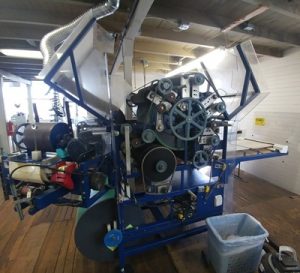

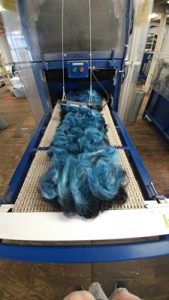
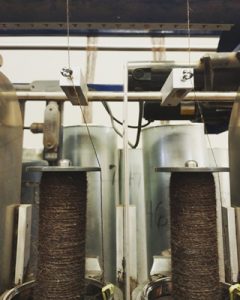

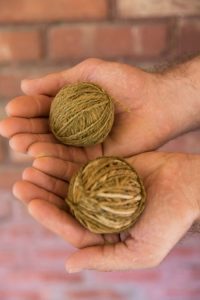 Yarns exist on a spectrum with the most intimidating (and sometimes unattainable) ones at each end – TRUE WOOLEN and TRUE WORSTED. Everything else is in between, and it’s this everything else that the Semi issue is focused on. Honestly, it’s probably what most of us spin most of the time, so get ready for an issue that’s about your yarn.
Yarns exist on a spectrum with the most intimidating (and sometimes unattainable) ones at each end – TRUE WOOLEN and TRUE WORSTED. Everything else is in between, and it’s this everything else that the Semi issue is focused on. Honestly, it’s probably what most of us spin most of the time, so get ready for an issue that’s about your yarn.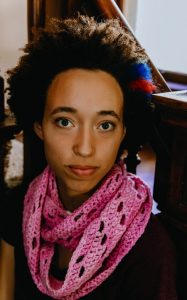 With those results in mind, what about end uses? Which semi- yarns are best for which applications? We’ve got that, too! We’ve also got Russian spindles (like you’ve never seen them before), a hot button where nobody really agrees, semis for weaving, a Guilded about spinning embroidery thread, and 2 fantastic projects, one knit and one crochet. So don’t miss this informing and gorgeous issue where we give you the information to finally decide: is the yarn semi-woolen or semi-worsted (does it rely on prep or draft?) or, and this is a new one, is it really the fiber?
With those results in mind, what about end uses? Which semi- yarns are best for which applications? We’ve got that, too! We’ve also got Russian spindles (like you’ve never seen them before), a hot button where nobody really agrees, semis for weaving, a Guilded about spinning embroidery thread, and 2 fantastic projects, one knit and one crochet. So don’t miss this informing and gorgeous issue where we give you the information to finally decide: is the yarn semi-woolen or semi-worsted (does it rely on prep or draft?) or, and this is a new one, is it really the fiber?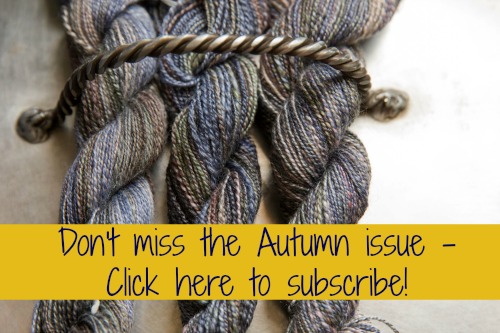


Leave a Reply
Want to join the discussion?Feel free to contribute!